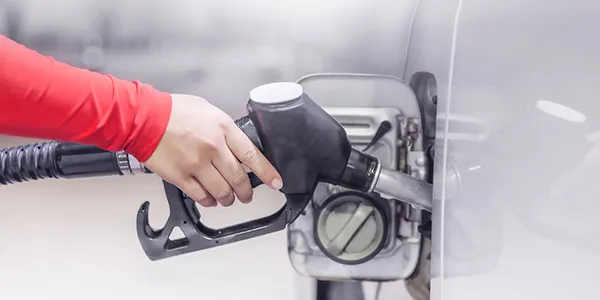UNVEILED FOR YOU: THE MYSTERY OF…
FLUCTUATING GASOLINE PRICES
Gasoline prices take a big bite out of any budget and when you manage a fleet, even the smallest change can impact your bottom line. We explain why prices fluctuate and what you can do to protect your business against this.
There are four major factors that influence the price of gasoline: crude oil price, refining costs, taxes, and the law of supply and demand.
● Crude Oil Prices
Gasoline prices are closely linked to the global crude oil market. These prices are mainly determined by supply and demand on an international scale. A significant part of European oil imports comes from countries such as the US, Saudi Arabia, Russia and Canada.
The Organization of the Petroleum Exporting Countries (OPEC) plays an important role in shaping the crude oil market. OPEC sets production targets for its 13 member countries and there is a strong correlation between these decisions and oil prices.
● Refining Costs
Before crude oil can be used as gasoline, it must be refined, making gasoline pricing even more complex. Refineries that process crude oil can be found all over the world, with the US, China, Russia and India leading the way. Refining costs vary due to factors such as the type of crude oil used, refining technology and regional specifications. Also, distance from supply sources, such as refineries, ports and pipeline terminals, can mean higher transportation costs.
● Taxes
Governments set their own prices when it comes to taxes on oil products. As sustainability becomes an increasingly important topic of conversation, governments are under pressure to tax fuel companies more heavily.
● Supply and Demand
When demand for gasoline increases, both domestically and globally, it can drive prices up significantly. Fluctuations can also occur due to interruptions in the supply via pipelines or maintenance at refineries. This leads to decreasing inventories, which increases bids for the available inventories. Seasonal fluctuations also play a role, with prices rising in the spring and peaking in late summer, when people drive more often.
Regional differences and events affecting petrol prices in Europe
There are also differences between countries and regions when it comes to gasoline prices, including:
● Competition. Some retailers are affected by traffic patterns and certain brands want to lure customers with cheaper fuel to convince them to buy other items. In most European countries, retailers set their own petrol prices, based on their costs and the margins they want to make.
● Usage costs. It is more expensive to operate a petrol station in city centers than in smaller municipalities where rent and costs are lower.
● Environmental programs. Some governments are strongly encouraging electric vehicles at the expense of gasoline vehicles, while other regions require special gasoline formulas with additives to reduce emissions. This leads to higher costs for the production, storage and distribution of fuels.
● The corona pandemic had a huge impact on distribution and retail costs, which still partly influence petrol and diesel prices.
● Russia’s invasion of Ukraine in 2022 led the European Union to cut imports of Russian oil by two-thirds, reducing supply and raising prices.
How to limit the impact of gasoline fluctuations on your business
Check fleet details such as vehicle condition and maintenance costs. This can help you identify and address potential problems before costs increase.
Plan optimal routes: Well-planned routes can reduce distance and save fuel. Optimal routes should take into account the specific needs of different vehicle types, such as avoiding steep hills for trucks or navigating busy areas for light vehicles.
Invest in regular driver training, even for experienced drivers. This helps them adopt good habits that reduce fuel consumption by making them aware of issues such as the cost of idling the engine, high speeds, high torque and hard braking.
Use a fuel card service like WEX. You benefit from discounts at a selection of local petrol stations, thousands of locations, multiple fuels and excellent network coverage, so you can always choose the cheapest petrol.
Find the nearest gas station, with prices, and save time and money on inefficient route deviations. Use our gas station finder. A handy app, map, PDF or email version is available for both drivers and fleet managers.
![WEX Europe Services [nl-be]](https://www.wexinc.com/nl-be/wp-content/uploads/sites/24/2022/11/cropped-cropped-cropped-logo-new.png)
 Nederland - Nederlands
Nederland - Nederlands France - Français
France - Français Deutschland - Deutsch
Deutschland - Deutsch Italia - Italiano
Italia - Italiano Norge - Norsk
Norge - Norsk Luxembourg - Français
Luxembourg - Français België - Nederlands
België - Nederlands United Kingdom - English
United Kingdom - English